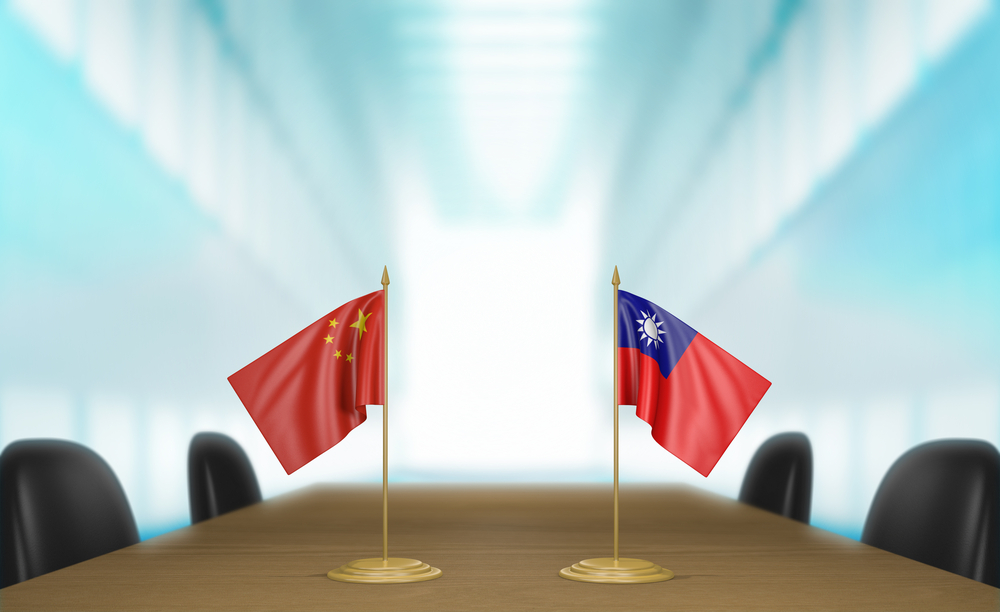Taking the Path Less Dangerous

Please note that we are not authorised to provide any investment advice. The content on this page is for information purposes only.
Since the pro-independence Democratic Progressive Party (DPP) won a landslide victory in presidential and congressional elections earlier this year, many experts have expressed anxiety about the future of cross-Strait relations. There are widespread concerns about whether the new government, led by Tsai Ing-wen, will try to adopt certain symbols of Taiwanese independence.
Since the pro-independence Democratic Progressive Party (DPP) won a landslide victory in presidential and congressional elections earlier this year, many experts have expressed anxiety about the future of cross-Strait relations. There are widespread concerns about whether the new government, led by Tsai Ing-wen, will try to adopt certain symbols of Taiwanese independence.
This could be changing the name of the Republic of China (ROC) to the Republic of Taiwan, amending the ROC constitution or even announcing formal independence. Of course, Beijing regards none of these as acceptable.
Chances are that the two sides of the Strait have different visions of what their future relations will be like. However, there are signs that a new modus vivendi between the two is gradually emerging.
In the past, when Beijing has said, it ‘opposes Taiwan’s independence’; the statement has encompassed two meanings. First, it means that Beijing does not recognise the existence of the ROC, the political entity that presides over Taiwan and other islands such as Penghu, Kinmen, Matsu and the Taiping or Itu Aba Island in the South China Sea. Second, it means that Beijing opposes people in Taiwan pursuing the idea of a so-called Taiwan independence movement.
Beijing’s recent Taiwan policy has indicated that, while a Taiwanese independence movement still cannot be tolerated, the existence of the ROC may now be acceptable to Beijing.
The first sign of this changed attitude was the historic meeting between Taiwanese President Ma Ying-jeou and Chinese President Xi Jinping in Singapore in November 2015. Though there may have been a number of reasons why the top leaders of the People’s Republic of China (PRC) suddenly agreed to meet with Ma, it is likely that saving the Kuomintang (KMT) was one of them.
PRC officials have in the past banned display of any symbols that imply the sovereignty of the ROC, such the national flag or even the word ‘national’ (guoli). However, when Ma spoke at the press conference after his meeting with Xi, the tag on his table, adorned with the ROC national flag, was hard to ignore.
However, the most interesting sign of change was in PRC Foreign Minister Wang Yi’s speech at the Center for Strategic and International Studies on 25 February. During the speech, he expressed the hope and expectation that Tsai ‘will accept the provision in Taiwan’s own constitution that the mainland and Taiwan belong to one, the same China’. While routinely emphasising that Taiwan belongs to China, Wang referred to ‘the constitution of the ROC’ — an unprecedented move.
If the ROC does not exist in Beijing’s eyes, why would Wang mention the ROC constitution? It is unlikely that a well-trained diplomat like Wang would have said this by mistake. Wang’s reason for talking about the constitution may have been to warn the new ROC president to stay in line with the ultimate aim of the constitution: unification. However, behind this warning is the message that the existence of the ROC is, at least temporarily, acceptable to Beijing.
The DPP has also been edging closer to the ROC banner, having previously rejected the wording ‘Republic of China’ in favour of the ‘Republic of Taiwan’.
After the Sunflower Movement in 2014, the Ma government was forced to put the controversial Cross-Strait Service Trade Agreement on hold. Legislative Speaker Wang Jin-pyng promised protesters that the agreement would not be discussed until the Cross-Strait Agreement Supervisory Act has been passed.
In February 2016, the DPP changed the wording of the act’s draft title from their original wording the ‘Taiwan and China Service Trade Agreement’, which implies that Taiwan and China are two states, to ‘the Cross-Strait Service Trade Agreement’, which implies Taiwan and the mainland both belong to the same entity — China. The reason for this change, according to the DPP, is that ‘Notably, the new wording of DPP’s draft is now the same as the KMT’s old draft, which the DPP had previously opposed.
Tsai also paid a visit to the Chairman of the People First Party, James Soong, on 9 March. Soong is famous for promoting his idea that the ROC serves as the greatest common denominator in cross-strait relations. He reiterated this idea at a joint press conference after the closed-door meeting with Tsai. It is still unknown how this idea will influence Tsai’s foreign policy and what kind of role Soong will play in it. However, Tsai stated at the conference that ‘one thing is for sure: we two will meet each other very often in the future’.
Decades ago, the existence — and concept — of the ROC was constantly challenged by both the PRC and the DPP. In 1936, Mao Zedong told Edgar Snow that he would support the Taiwanese in breaking away from Japanese imperialism.
Opposing the idea of the ROC was a founding principle of the DPP in 1986 and the goal of establishing an independent Republic of Taiwan was written into the DPP party constitution. Interestingly, we are now witnessing both the PRC and DPP gradually conclude that the existence of the ROC is necessary due to pragmatic considerations.
The future across the Taiwan Strait is still unpredictable. However, an agreement on the idea of the ROC is making it less dangerous.
Recognising the Republic of China is republished with permission from East Asia Forum




